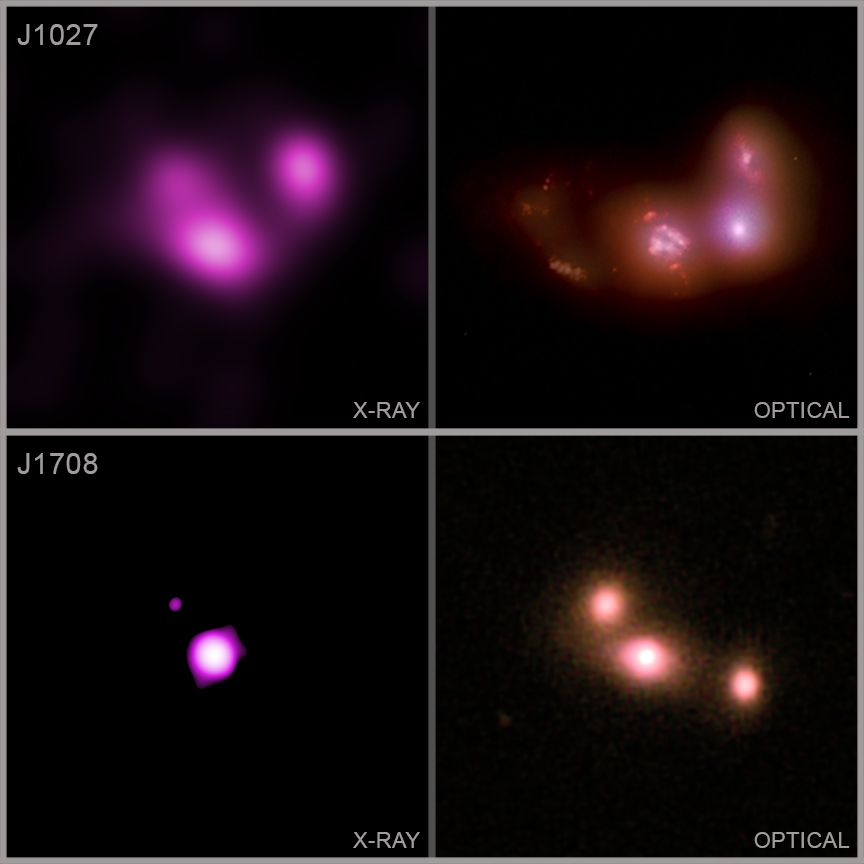
In math and physics, there are few problems as annoying as the so-called three-body problem. When three objects are gravitationally pulled together in space, they often interact in chaotic ways that can’t be predicted with straight forward equations. Unfortunately, the universe doesn’t care what math is easy or hard for us to do; it is going to do what it is going to do, and one of the things it is going to do is periodically give three supermassive black holes a chance to interact as galaxies merge.
This isn’t a common event, but it’s an important one for astronomers to understand if we want to build a model for how massive galaxies have formed over time.
In work presented at this week’s American Astronomical Society conference, Stanford University’s Adi Foord presents the results of combing through myriad catalogs of galaxy images in optical, infrared, and X-ray light to find triple systems. It turns out that triple mergers are exceedingly rare, with only seven mergers or large systems being found in current survey data that had their central black holes within 30,000 lightyears of one another.
This isn’t a lot of data, but it is enough to see that these systems are highly varied. One of the seven only had one of its three black holes actively consuming dust and gas pushed in by the merger. One had no black holes actively feeding. Most commonly, in four out of the seven, two black holes were active, and in only one system all three black holes were feeding.
These results help us understand the full range of ways supermassive black holes can draw material and energy toward one another. A simple pair of supermassive black holes are theorized to have trouble shedding enough energy to allow the two monsters to merge, but it’s thought that a third black hole may be able to help redistribute that energy and make a merger possible.
These results seem to hint that anything is possible. The definitive can they/can’t they of supermassive black hole mergers is ultimately going to be seeing one in action. The planned LISA mission may someday be able to detect the gravitational waves of supermassive black holes if they occur. Let’s hope triple mergers aren’t required, but if they are, it looks like they might be able to find a way to do anything.
More Information
Chandra X-ray Observatory press release
“AGN Triality of Triple Mergers: Detection of Faint X-ray Point Sources,” Adi Foord et al., to be published in The Astrophysical Journal (preprint on arxiv.org)
“AGN Triality of Triple Mergers: Multi-wavelength Classifications,” Adi Foord et al., to be published in The Astrophysical Journal (preprint on arxiv.org)




 Join the Crew!
Join the Crew!
 Escape Velocity Space News
Escape Velocity Space News
0 Comments